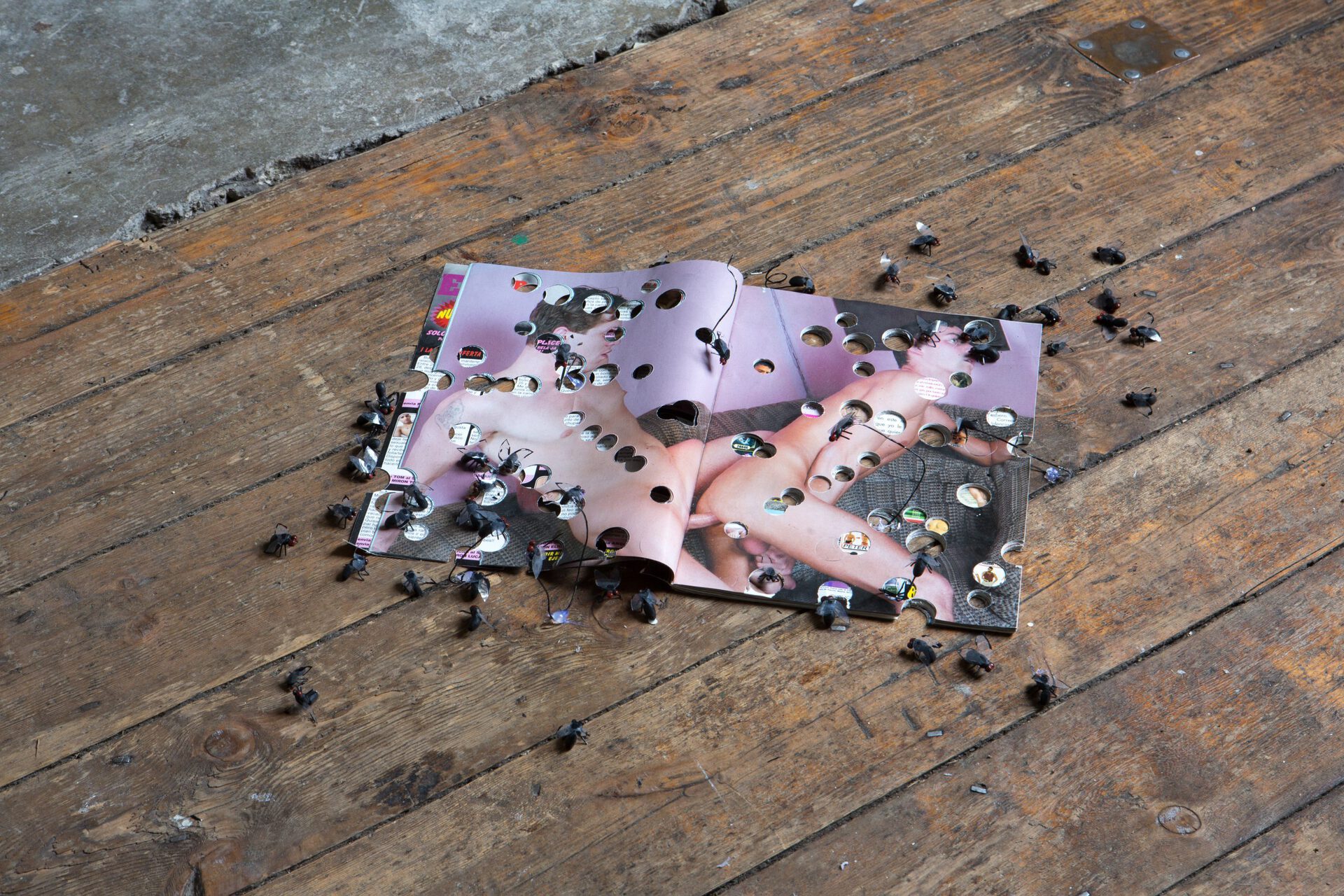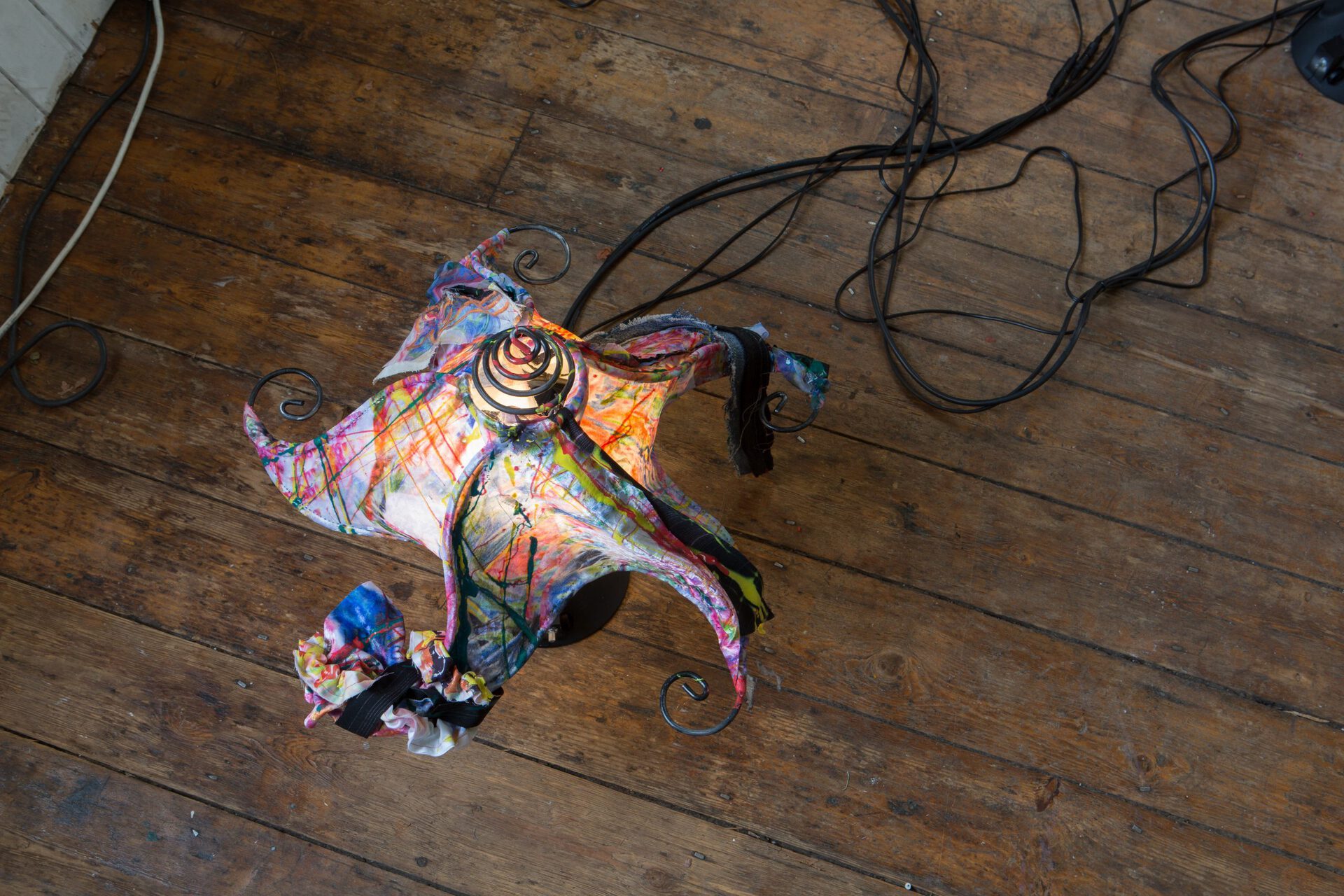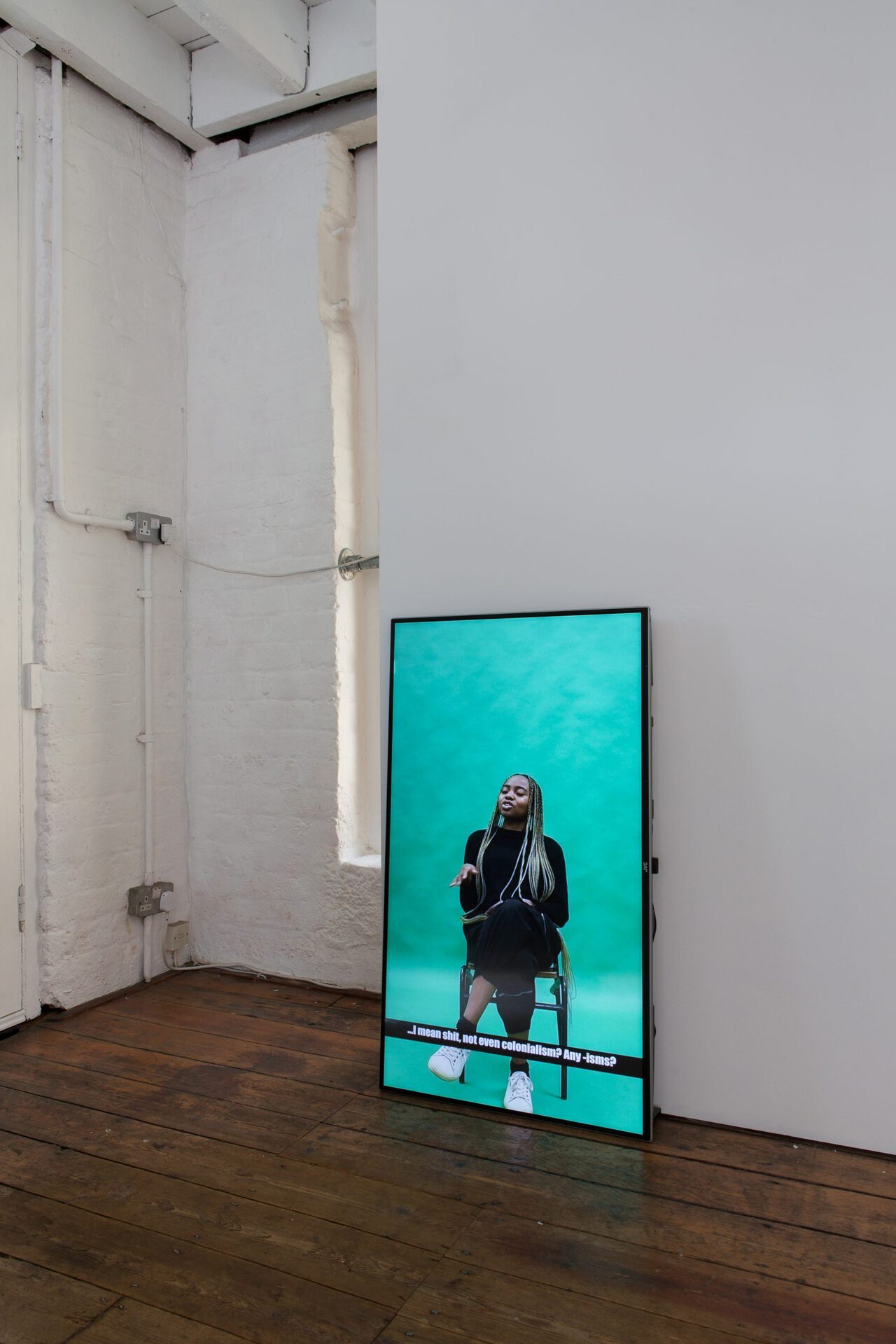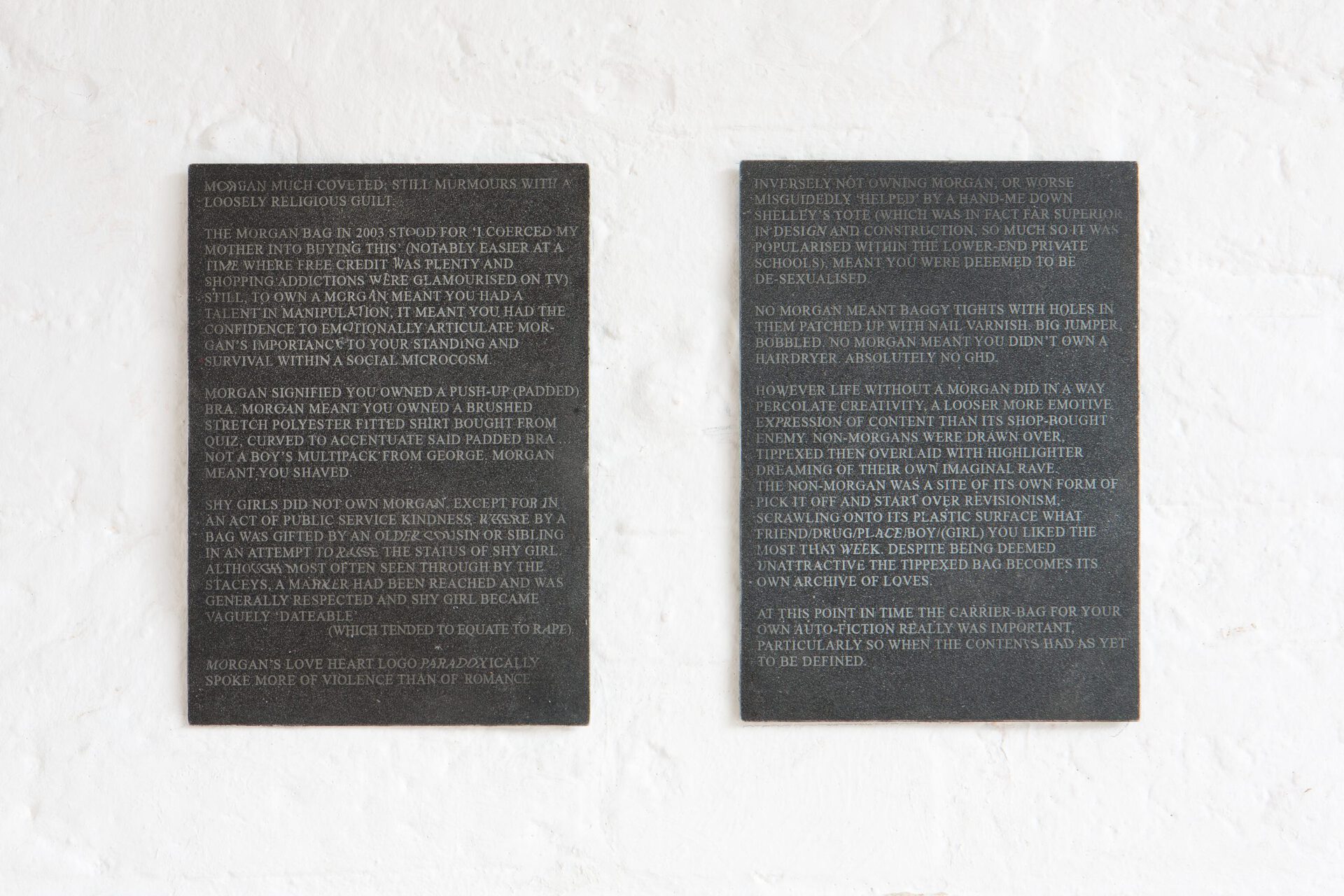Archive
2022
KubaParis
Sublime Rage

















Location
9 French Place, E16JBDate
26.05 –08.06.2022Curator
Héloïse Chassepot and Maya ShohamPhotography
Agnese SanvitoSubheadline
“Cuz you ain’t legit, and you full of shit. Baby, it’s violence. It is what it is, I can’t make no excuses. Common, you’re mean, say it… Say it. Say it. It’s all right! We all are!” Sublime Rage gathers the work of Tom Bull, Heloise Chassepot, Naia Combary, Ndayé Kouagou, Rafael Moreno, Paul Paillet, Katie Shannon, Maya Shoham, Temitayo Shonibare and Koyo Waldorf to acknowledge - if not celebrate, our sinful penchant towards meanness. Let’s be clear: it is not about making up a gratuitous apology for rage. It is rather a collective confession of an inevitable need for a bunch of incandescent feelings. Whether as a bulwark against the uncontrollable aggression coming from dominant forces or as a weapon against seemingly unattainable powers, meanness is a voice that tries to pierce the inaudible. Reading of Lilly Marks and performance of Katie Shannon, Cucina Povera and Rebecca Lenti on the 27th of May. Concert of Batmoon on the 9th of June. Open from 12 to 6pm on the weekend, upon appointment during the week.Text
SUBLIME RAGE: OURS, NOT YOURS
They often came out at night, after putting their
daytime, social public suits to sleep. After brushing the
teeth in their mouths, after kissing their partners, their
children, goodnight. It was rumoured that a great
number of them embraced a vegan diet, but what they
ate during the day didn’t matter; deep down they were
carnivores, for the sickness made it so that their hearts
became laced with a second, heterodont dentation,
hungry for the pain of others, and fit to consume their
blood and flesh. When in active mode, a second set of
nails, small but blade-like, that is to say, razor-sharp,
would also emerge from inside the skin of their
eyelids—claws camouflaging as eyelashes, ready to
snatch their prey. The majority of times, they, of
course, did not do so directly. Though they did
sometimes come out in the open, they mostly preferred
to dwell in the shadows—to operate from behind the
closed doors of their apartments, from the home office,
or the basement, for example. Fully immersed in the
blanket of digital dualism, they searched the
infrastructure called the Internet (and which we now
know was little more than an enormous market) for
potential victims.While they frequently engaged in
swarming behaviour, they were not a community but
an aggregate, rather, of individuals—alienated, alone
and lonely, though rarely admittedly so. Although few
ever stood in their presence, it is said that, while in
attack mode, their eyes became filled by blue-light fire
to the point of blindness…
Speaking of eyes, those who contracted the disease
would, in the early stages, begin to experience a strange
pull that often led them to adopt a position of
voyeuristic scopophilia—to derive pleasure, that is,
from witnessing those others, mature hate-vamps,
attack their victims. And the more cruel the treatment,
the more complete their satisfaction. With a little bit of
help from one’s friends, family and therapist(s), one
sometimes managed to contain the curse, and to
remain at that preclinical stage. Still, this stage and role
(of the silent accomplice) was not a minor one, for the
hate-vamps adoOored an audience. After leaving the
scene, they, to be sure, barely ever remembered the
names of their victims. Archived for posterity as a
series of lolz, their full-of-terror laughter would turn
silent. In the morning, they would get up, brush the
teeth in their mouths, wash the pain of others off their
hands, and drive themselves to work.
Nobody knows exactly how their species emerged.
Some say it was mask meanness, but evidence shows
they had been around long before the eruption of that
last epidemic. I, for one, speculate that they were bitten
by Marx’s Vampire a.k.a. Capital a.k.a. the World. For,
let’s face it, the World was a fucked up place. Of course,
the cool-headed rationals thought all would be well if
we could just keep calm and carry on—“just serve the
World, it’s gonna be alright!” they kept saying—but the
truth was we were all travelling through anger’s
dominions now. And not one body was safe. Especially
not theirs. Them who documented death with steady
fingers, them who read Myriam Gurba write:
“Somewhere on this planet, a man is touching a
woman to death,”¹
or Jenny Holzer’s Lustmord series, without flinching.
Them who whistled while driving refugees back behind
the border fence. Them who dug deeper when the
earth went dry. Nobody liked them and they were the
first to go. Yeah, you had to be a sadist or a masochist
to happily partake in the ways of the World—to feel
anything other than your blood boiling and rising to
suffuse your heart, lungs, and nervous system, the way
it does when you turn furious.
Like Solange Piaget Knowles and a great number of
others, I too had a lot to be mad about. Be mad, be
mad, be mad. Losing sleep to dreams of another,
better reality, I dragged my tired body around and
found myself composing funeral scores at work, in the
shower, or while waiting for the bus to arrive…Against
the hate-vamps were fighting the awake, also known as
The Raging Ones, for whom
“anger expressed and translated into action in the
service of vision and our future is a liberating and
strengthening act of clarification.”²
I joined this army in the summer of 2022, and began to
breathe again. Up until that point I was living under
the illusion, shared by many, that rage—by definition,
an unchecked intensity of anger—was something to be
ashamed of, a bad feeling.³ It had not yet occurred to
me to put my rage to work. The Raging Ones showed
me how. Needless to say, the unaware and cool-headed
rationals all thought we were like those others, those
vamps filled with hatred, but they couldn’t be further
from our truth. Yes, we were killjoys, mongrels
“bent on eating the the ice-wormy hearts of gringpos
under the post-mercury retrograde full moon”⁴
… angels of destruction. But ours was a rage mastered,
a rage carefully sculpted into arrows strong enough to
pierce through everyone’s antennas, causing
interference, causing the noise that was our call to
liberation. And we didn’t hide: covered in stardust, we
took to the streets, dancing the pain away until that
moment when we felt ourselves reemerge as parts of a
single body, moving in anharmonic unison.⁵ If a good
look in the mirror was often enough to destroy the
hate-vamps, nothing could destroy us—one of us
maybe but never us, this Undercommons,⁶ who were
never afraid of the World since we knew our joy to be
so much more contagious than its hatred. This is why
the disease never got us…
In 2051, we finally managed to destroy the World,
and began to make gardens of its ruins. Our alien
ancestors returned from Saturn on the Galaxy Express
999 the year after, and the rave/age of happiness on
earth began. I left my earthly body in 2072, but the
pleasure I took in the company of The then-Raging/
now-Raving Ones accompanied me into the cosmos. It
made the dust I became all glowy, and I returned to
adorn the bodies of our offspring only a few decades
later.
by Lilly Marks
[1]Myriam Gurba,Mean (Minneapolis and Brooklyn: Coffee House
Press, 2017), n.p.
[2] Audre Lorde. “The Uses of Anger, ”Women’s Studies Quarterly, Vol.25,
No.1/2 (1997): 280.
[3] See: Arts Against Cuts,Bad Feelings (London: BookWorks, 2015);
and Sianne Ngai,Ugly Feelings (Cambridge,Mass; London: Harvard
University Press, 2007).
[4]MollyMcArdle, “’I Arrived at the Revolution via Poetry’: An
Interview with the Mongrel Coalition Against Grinpo,”Blooklyn
Magazine, July 22, 2015: https://www.bkmag.com/2015/07/22/iarrived-
at-the-revolution-via-poetry-an-interview-with-the-mongrelcoalition-
against-gringpo/
[5] FredMoten and Stefano Harney, “Base Faith,” e-flux journal #86
(November 2017): https://www.e-flux.com/journal/86/162888/basefaith/
[6] FredMoten and Stefano Harney,The Undercommons: Fugitive
Planning & Black Study, Wivenhoe; New York; PortWatson:Minor
Compositions, 2013).
Lilly Marks